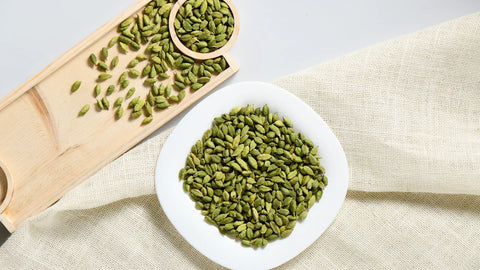When it comes to spices that bring depth and complexity to dishes, bay leaf stands out as a culinary superstar. Often found tucked away in spice cabinets, this aromatic leaf deserves a spotlight in the kitchen. In this blog, we’ll explore the origin of bay leaves, their culinary uses, and why they are essential for enhancing your cooking.
The Origins of Bay Leaf
Bay leaves come from the Laurus nobilis, an evergreen tree native to the Mediterranean
region. Historically, these leaves have held significant symbolism, representing victory and honor in ancient Rome, where they were used to create laurel wreaths for champions. Beyond their historical significance, bay leaves have been cherished in cooking for centuries, making their way into kitchens around the globe.
Culinary Uses and flavour Profile
Bay leaves possess a unique flavour profile that is slightly floral and earthy, with a hint of
bitterness. However, they are not meant to be consumed whole. Instead, their flavour is best extracted through cooking. When simmered in stews, soups, sauces, and braises, bay leaves release their aromatic essence, enhancing the overall dish.
You’ll often find bay leaves featured in recipes for slow-cooked meals. In hearty beef stews or rich tomato sauces, for example, adding a couple of leaves can transform the dish, lending a warm, savory note that will delight anyone who tastes it. They also work
beautifully in rice dishes, lending subtle flavour to simple preparations.
Cooking is not just about following a recipe; it’s about building layers of flavour. Bay leaves play a crucial role in this process. They are excellent companions in Mexican mole sauces, Mediterranean risottos, and French-inspired braised dishes. Their ability to harmonize with other ingredients makes them a valuable addition to any culinary adventure.
The Need for Bay Leaves in Your Kitchen
The versatility of bay leaves is one of their greatest assets. Not only do they enhance
flavours, but they also add a rustic touch to your meals. If you're looking to bring a new
dimension to a favorite recipe, consider adding bay leaves. Their rich, aromatic flavour can
elevate dishes to new heights, transforming ordinary meals into extraordinary experiences.
Storing Bay Leaves
To maintain their freshness and flavour, store bay leaves in an airtight container in a cool,
dark place. Whole leaves can last for up to a year, but crushed leaves will lose potency
faster. Remember to remove the leaves before serving, as they are tough and can be
unappetizing if bitten into.
FAQs About Bay Leaves
1. Can you eat bay leaves?
No, bay leaves are not meant to be consumed. They are used for flavouring dishes and
should be removed before serving.
2. How long can I store bay leaves?
Whole bay leaves can last up to a year when stored properly in an airtight container in a
cool, dark place.
3. What dishes can I use bay leaves in?
Bay leaves are perfect for soups, stews, sauces, rice dishes, and marinades. They enhance
the flavour of any dish that simmers or cooks slowly
Conclusion
In summary, bay leaves are a simple yet powerful spice that can transform your cooking.
They bring a unique flavour profile that enhances a variety of dishes, making them a staple for any kitchen. So next time you reach for your spice rack, don’t forget to grab the bay leaves. Discover the difference they can make and enjoy the flavourful world they unlock in your culinary creations!











